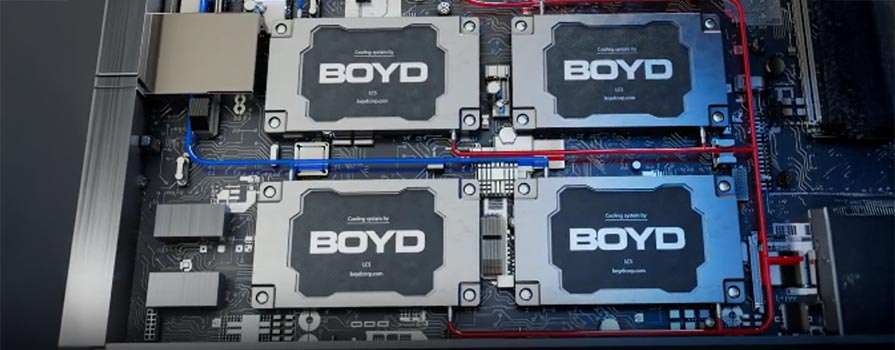Optically clear adhesive (OCA) bonding adheres display layers together with a sheet adhesive to maximize optical clarity.
In our previous blogs in the display bonding technology series, we discussed air gap bonding and liquid optical clear adhesive (LOCA) bonding. In the final blog of our three-part bonding technologies series, we focus on the most widely used display bonding capability at Boyd: optically clear adhesive (OCA) bonding.
What is the Process Behind Optically Clear Adhesive (OCA) Bonding?
Optically clear adhesive bonding is an innovative technology that allows Boyd to provide thinner bond lines, resulting in thinner overall display stack-ups. OCA bonding utilizes a dry film pressure-sensitive adhesive to join layers together. OCA is laminated to a substrate using pressure to eliminate air gaps from the assembly. This can bond a rigid component to other rigid components or a flexible component (such as an overlay) to a rigid component.
- Rigid-to-Rigid OCA Bonding: A vacuum chamber removes all air from between the layers, closely adhering two or more rigid components.
- Flexible OCA Bonding: A roller pushes all the air out from between the flexible component and substrate (either flexible or rigid) with a manual roller or automated in-line rotary precision converting.
Preventing all bubbles or air gaps maximizes optical clarity, making OCA ideal for applications where readability is critical. We generally handle, process, and assemble OCA in Class 100 clean rooms to assure zero foreign object debris (FOD) or contamination. We have both UV or UV–sensitive environments depending on the material and application.
Why Choose Optically Clear Adhesive (OCA) Bonding?
The main advantage of optically clear adhesive bonding technology is thinner bond lines. Where liquid optically clear adhesive (LOCA) bonding can achieve a bond line between 0.015″ to 0.030″, OCA bonding can get even thinner, achieving a 0.005″ to a 0.008″ bond line. This bonding capability is well-suited for components where thickness is critical, including cover glass, touchscreens, and frameless LCDs.
Another advantage of optically clear adhesive bonding is that the sheet adhesive does not require curing, making it faster than other bonding processes. Using a sheet adhesive also provides tighter tolerance, more consistent flat bond lines, and higher yield rates when compared to liquid adhesives. No special dispensing equipment is needed.
While there are several benefits to using optically clear adhesive, it may not be suitable for all applications. Unlike LOCA bonding, optically clear adhesive results in a bonded adhesive that cannot be reworked, which requires a more rigorous inspection and testing process to ensure high manufacturing yields.
Boyd offers a wide variety of bonding options to meet unique project needs, providing the best-fit solution for your application. To learn more about the process behind our display bonding technologies, read our other blogs listed below or reach out to our experts.
What is Liquid Optically Clear Adhesive (LOCA) Bonding?







